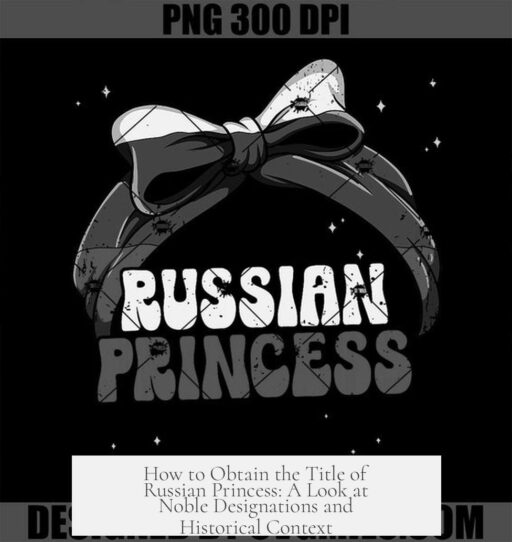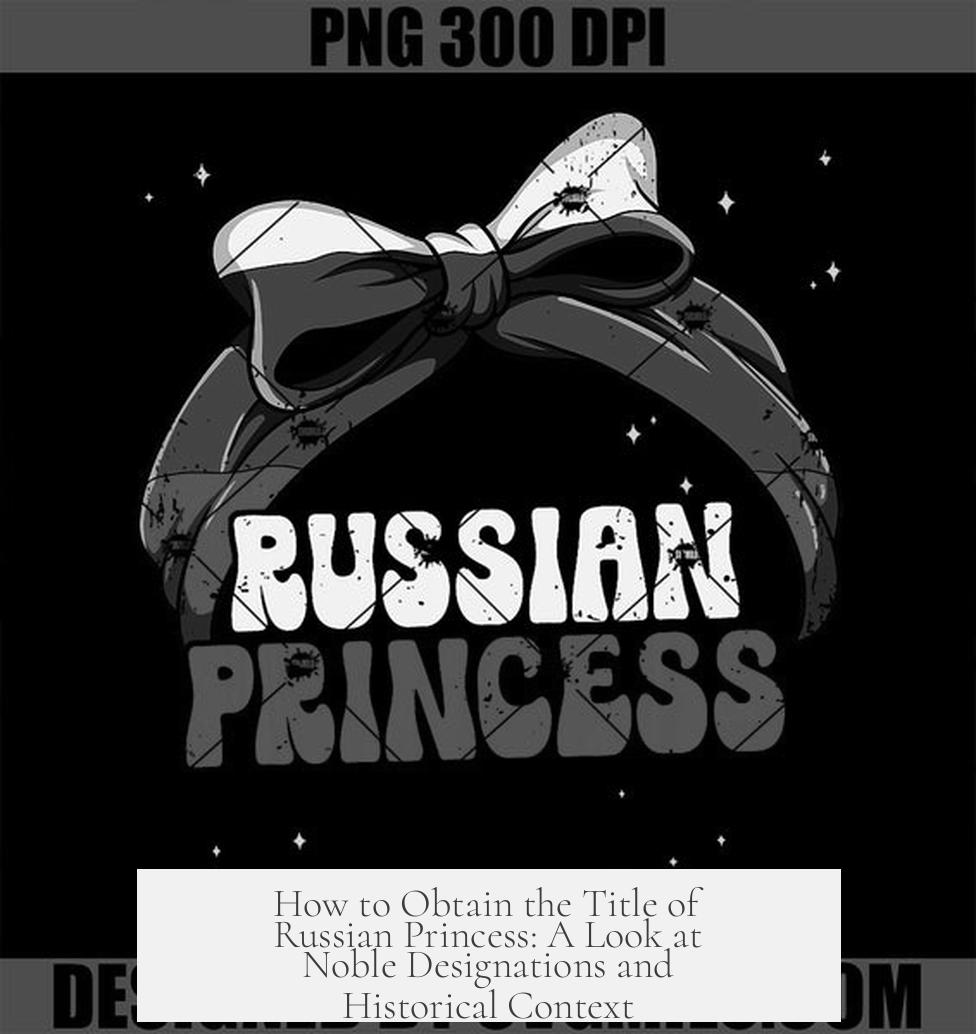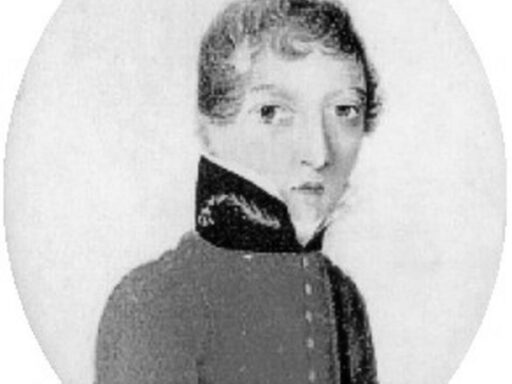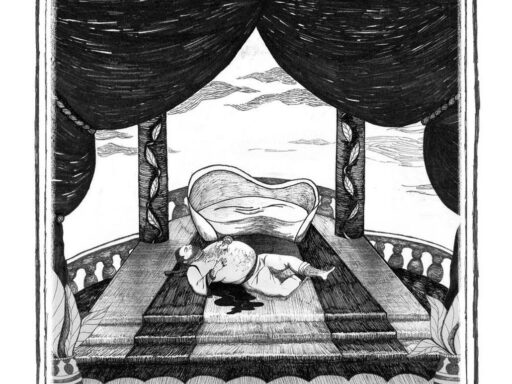The title “Russian Princess” was never an official or formal title in Imperial Russia. Instead, several distinct titles existed, which are sometimes loosely translated into English as “princess.” The concept of a “Princess of Russia” as a standalone, recognized status did not occur, particularly by the late 19th century.

Four primary Russian titles corresponding roughly to the English term “princess” are:
- Великая Княжна (Velikaya Knyazhna)
- Царевна (Tsarevna)
- Княжна (Knyazhna)
- Княгиня (Knyaginya)
Each title carries different historical weight, origin, and methods of acquisition.
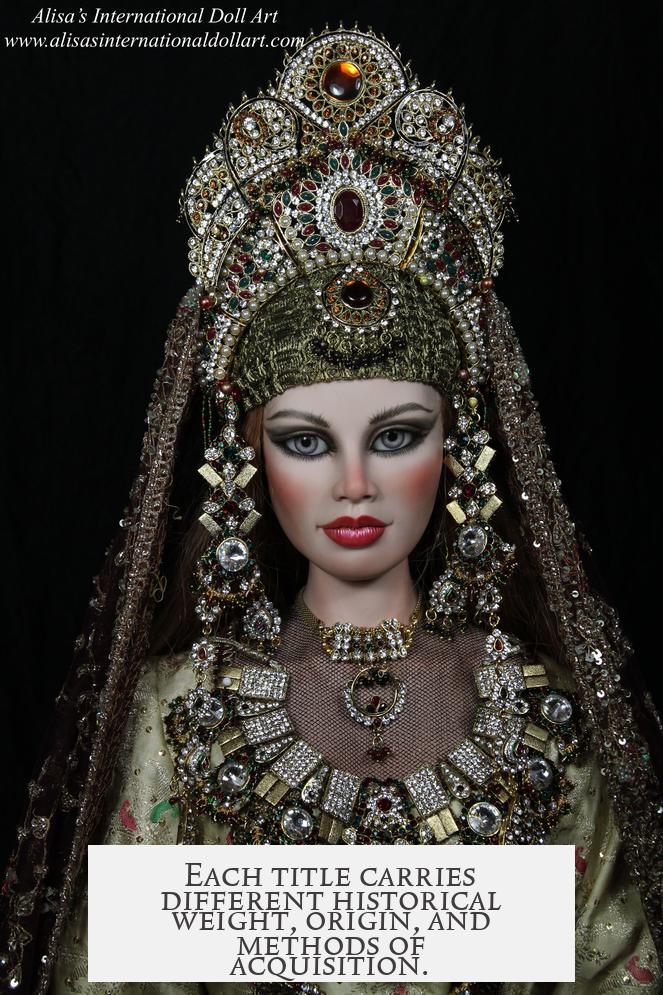
Великая Княжна (Grand Duchess or Grand Princess) was the highest imperial title. These women were daughters or granddaughters of the reigning emperor via the male line.
- Post-1885 rules required that their father or paternal grandfather be the emperor to hold this title.
- The title indicated imperial blood and ranked higher than the majority of European princesses.
- Although sometimes casually called princesses by foreigners, the official and proper term was Grand Duchess.
Царевна (Tsarevna) literally means “daughter of the tsar.” Historically, it referred to the daughters of the tsar, but by the 1890s, this title was nearly obsolete for women born into it.
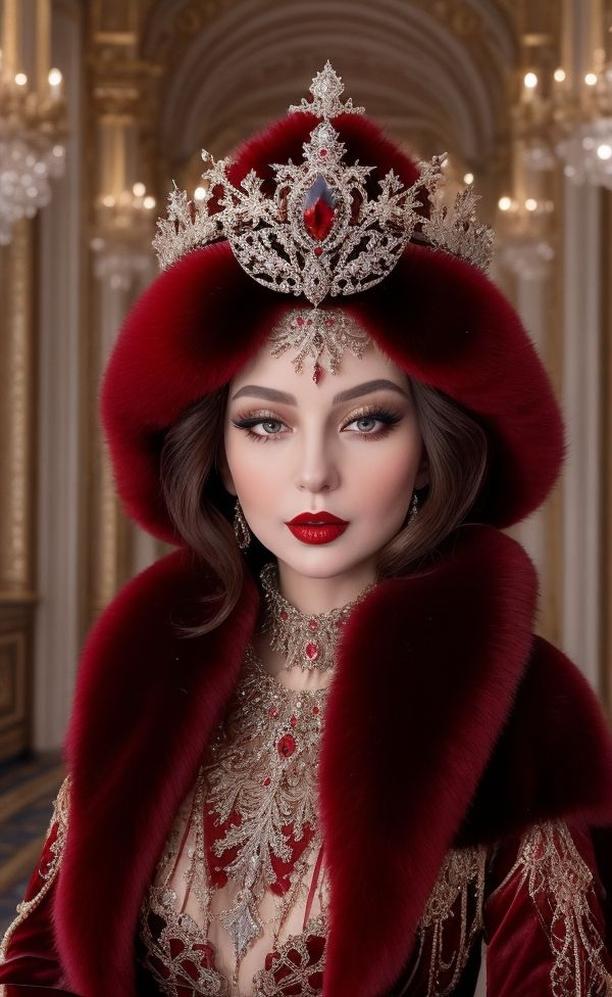
- Due to European influence and modernization, the title was restricted mostly to the wife of the tsesarevich (heir apparent).
- This meant that a woman typically could not be born a tsarevna in that period; the designation came by marriage.
Княжна (Knyazhna) and Княгиня (Knyaginya) are noble titles, commonly translated as “princess” and “duchess,” respectively. These titles were held by members of the princely noble class, not the imperial family.
- Княжна referred to the daughter of a князь (a prince or nobleman).
- Княгиня designated the wife of a князь.
- These titles linked directly to the family name and lineage rather than land holdings.
- You might become a княжна by birth if your father held the princely title or, under special circumstances, as a granddaughter of the emperor whose father was not the tsesarevich.
The ruling Romanov dynasty enacted a significant reform in 1885. This reform aimed to limit the number of grand dukes and duchesses who received imperial funds.

- Alexander III introduced the category “Prince of Imperial Blood” (Князь императорской крови).
- Under this law, only direct male-line descendants of the emperor up to grandchildren (two generations) could call themselves Grand Dukes or Duchesses.
- Those born beyond that generation would hold the title of Prince or Princess of Imperial Blood, a rank below Grand Duke/Duchess but still part of the imperial house.
- This law was valid only for descendants born and marriages consummated after its enactment.
In modern and casual contexts, Princes and Princesses of Imperial Blood might be referred to as Princes or Princesses of Russia, but this is informal. Historically, “Princess of Russia” was not an official or recognized title.
Summary of how one obtained a princess-equivalent title in Russia:
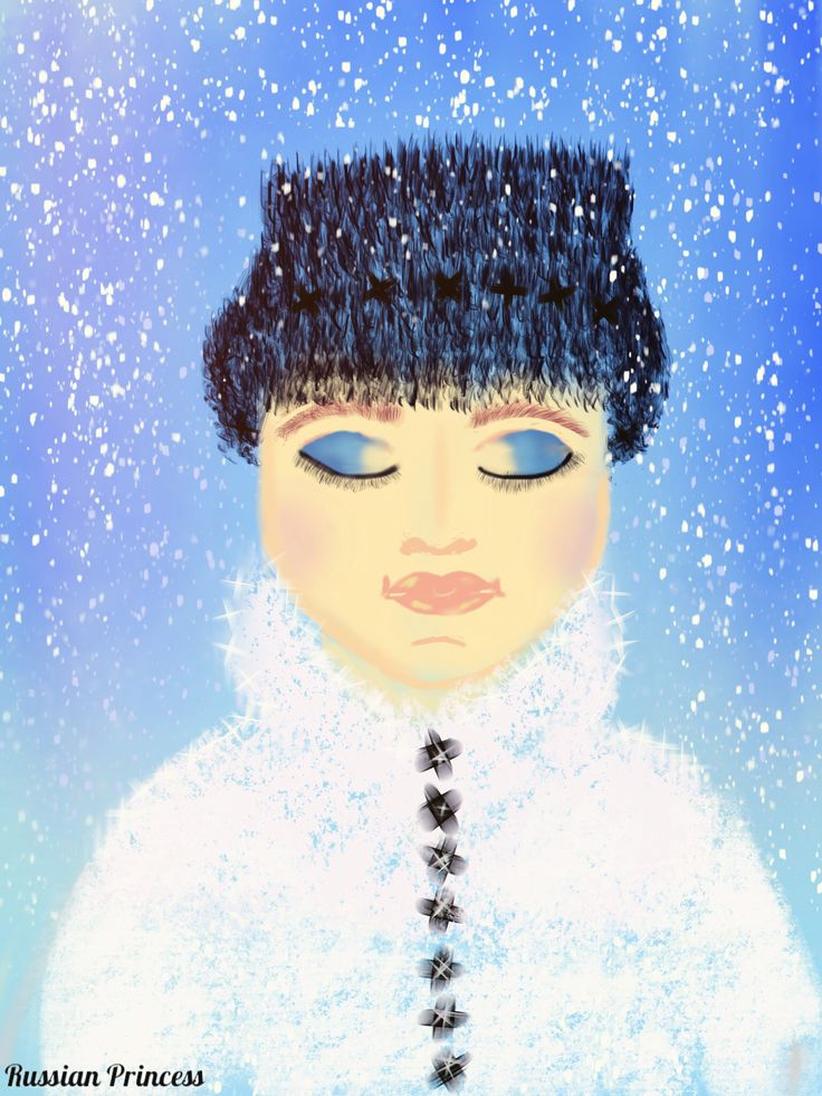
- By birth in the ruling family: If born a daughter or granddaughter (male-line) of the emperor post-1885, one was a Grand Duchess (Великая Княжна).
- By marriage: Becoming the wife of the tsesarevich entitled one to the title Tsarevna (Царевна) in practice.
- By noble birth: Being the daughter of a prince (Князь) granted the title Knyazhna—translated as princess but of noble rank, not royalty.
- Post-1885 reform: Descendants beyond grandchildren of the emperor were Princes or Princesses of Imperial Blood (Князь императорской крови).
None of these titles straightforwardly meant “Princess of Russia” as a separate, formal designation. The closest official title to that phrase would be Великая Княжна (Grand Duchess), but even that denotes a higher rank, and the term Tsarevna applied more to daughters of tsars or their wives historically.
| Title | Meaning | How Acquired | Rank | Notes |
|---|---|---|---|---|
| Великая Княжна (Grand Duchess) | Imperial princess | Daughter or granddaughter of Emperor (male line) | Highest imperial female rank | Often mistranslated as ‘princess’ |
| Царевна (Tsarevna) | Daughter of Tsar (historical) | Wife of Tsarevich (late 19th c.) | Imperial by marriage | Rare by 1890s, marriage title |
| Княжна (Princess/Noble) | Daughter of a noble prince | Birth into princely family | Noble rank, non-royal | Similar to duchess |
| Княгиня (Duchess) | Wife of a князь | Marriage | Noble rank, non-royal | Title linked to family name |
The key takeaway is that the popular notion of a “Russian Princess” is often simplified or inaccurate. Any woman referred to in English as a princess in Russian history would likely hold one of the four titles outlined, none of which equate directly to “Princess of Russia.”

- “Princess of Russia” was never an official title.
- Grand Duchess (Великая Княжна) is the closest imperial equivalent.
- Tsarevna (Царевна) by the 1890s was mainly a title by marriage, rarely by birth.
- Княжна and Княгиня indicate noble, not royal, princess equivalents.
- The 1885 reform limited grand ducal titles to close emperor descendants, introducing Princes of Imperial Blood.
How Did One Obtain the Title of Russian Princess?
To put it bluntly: “Russian Princess” was never an official title. If you imagine a grand lady proudly calling herself “Princess of Russia” in 1895, you’re likely chasing a ghost. The term “Russian Princess” is more of a charming myth than a historical fact. So how did titles that *sound* like princesses really work in Imperial Russia? Let’s peel back the layers.
First, it’s important to understand that the phrase “Princess of Russia” never had an official place in the grand hierarchy of Russian nobility and royalty. That’s just a shortcut often used outside Russia to simplify or romanticize complicated titles.
The Four Russian Titles That Could Be Called ‘Princess’
Russian did have titles which can be loosely translated as princess, but each had its own specific meaning:
- Великая Княжна (Velikaya Knyazhna) — Grand Duchess or Grand Princess
- Царевна (Tsarevna) — Daughter of the Tsar
- Княжна (Knyazhna) — Daughter of a Prince
- Княгиня (Knyaginya) — Wife of a Prince
Each title carried different social weight and came with its own rules on how one obtained it.
Великая Княжна: The Imperial Grand Duchess
Imagine being a direct child or grandchild of the emperor. That’s the world of the Великая Княжна. This title translates either as Grand Duchess or Grand Princess, but really, the name you pick doesn’t matter much—both convey royalty that trumped most European princesses.
The catch? After reforms in 1885, to be a Великая Княжна, your father or paternal grandfather *had to be* the reigning emperor. No skipping the line, no honorary appointments.
These Grand Duchesses were the crème de la crème of royalty. Outsiders might call them princesses, but officially, they were above that humble rank.
Царевна: The Daughter of the Tsar
“Tsarevna” translates literally to “daughter of the tsar.” By the 1890s, political and social shifts muddled this title.
Only one woman still held the title—and it wasn’t by birth. It was the wife of the tsesarevich, the heir apparent. So forget about being born a tsarevna; marriage was your only route.
This title is often just transliterated, not translated, because it carries a very specific historic significance that “princess” just doesn’t capture.
Княжна and Княгиня: The Noble Princess and Duchess
Moving away from royalty, княжна and княгиня are the most common titles that translate as “princess” in a general sense. But here’s the twist: they were titles of nobility, not royalty.
A княжна was the daughter of a князь (prince), while a княгиня was his wife. They are closer to dukes and duchesses in Western nobility rather than sovereign princes or princesses.
Interestingly, these titles tied to family names rather than controlling land. So, you could carry a grand-sounding name like “Princess So-and-So,” but this reflected family legacy, not territorial rule.
You could become a княжна either by birth—if your father was a prince—or if your grandfather was the emperor but your father wasn’t the heir apparent, the tsesarevich.
The 1885 Reform: Enter the Princes and Princesses of Imperial Blood
Hold onto your hats: Alexander III shook things up in 1885. Grand dukes and duchesses were enjoying substantial privileges, including sizable allowances from the imperial treasury. The emperor thought it was getting extravagant.
The reform introduced a new rank — Prince or Princess of Imperial Blood (Князь императорской крови). This was a sub-category of prince (князь), restricting grand dukes and duchesses to children and grandchildren of the emperor through the male line.
In other words, after 1885, only male-line descendants up to two generations away from the emperor could be Grand Dukes or Duchesses. Everyone else down the line became princes and princesses of imperial blood.
This reform only applied to those born or married after the law was passed — meaning it reshaped the royal landscape going forward, but left earlier titles untouched.
Here’s a quirky fact: Even today, these princes and princesses of imperial blood sometimes get called “princes of Russia” or “princesses of Russia” in a loose way. But historically speaking? If you called yourself that before 1895, you’d raise some eyebrows.
A Quick Summary: Who Could Rightfully Claim to Be a Russian Princess?
So, what does all this mean?
- A “real” princess of Russia—meaning a direct royal princess—would either be a Великая Княжна, Царевна, or a Prince(ss) of Imperial Blood under strict rules.
- “Princess of Russia” as a stand-alone formal title? Non-existent.
- Most women called princesses belonged to noble families, with the title княжна or княгиня, akin to duchesses.
- The 1885 reform trimmed the royal family titles, clarifying who counted as a grand duke or duchess versus a prince or princess.
Picture it like this: If you met someone in 1895 claiming to be a Russian princess, she was either a very young girl with specific imperial bloodline status or a noblewoman with a title translating roughly to princess.
Why Does This Matter?
Understanding these distinctions fuels a better grasp of Russian history and the cultural weight of titles. It also busts a myth popularized by romance novels and Hollywood—that “Russian Princess” was a common, proud title.
It teaches us about the complexity of Russian social hierarchy and how language shapes perceptions. More importantly, it warns us against taking simplified translations at face value.
Have You Ever Met a “Russian Princess” in Literature or Film?
Think about the characters you know. Were they Grand Duchesses, noble princesses, or just romantic inventions? Now you’re armed with facts to spot the difference.
Maybe next time you hear “Russian princess,” you’ll smile knowingly—and appreciate the tangled, fascinating reality behind those words.
